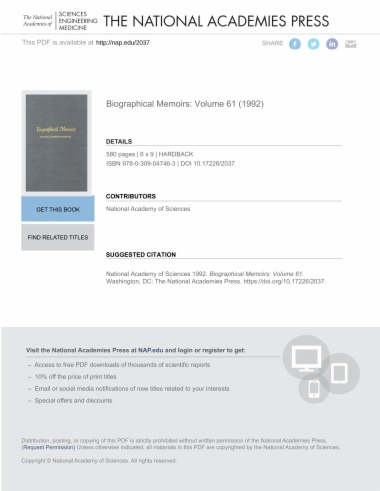Biographic Memoirs: Volume 61 contains the biographies of deceased members of the National Academy of Sciences and bibliographies of their published works. Each biographical essay was written by a member of the Academy familiar with the professional career of the deceased. For historical and bibliographical purposes, these volumes are worth returning to time and again.
- Cover
- Front Matter
- Bigraphical Memoirs
- Lloyd Viel Berkner
- Robert Bigham Brode
- Karl Taylor Compton
- Clyde Hamilton Coombs
- Carl Ferdinand Cori
- Gerty Theresa Cori
- John Holmes Dingle
- Harvey Fletcher
- Robert Minard Garrels
- Hollis Dow Hedberg
- Dwight Joyce Ingle
- Solomon Lefschetz
- Arthur Weever Melton
- Elvin Charles Stakman
- Otto Struve
- Norbert Wiener
- Perry William Wilson
- Clark Wissler
- Wendell Phillips Woodring
- Frederik William Holder Zachariasen
- Cumulative Index

